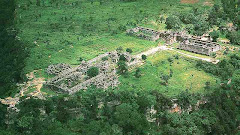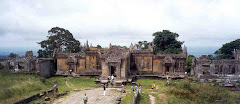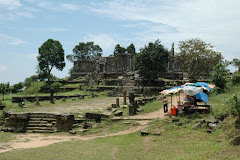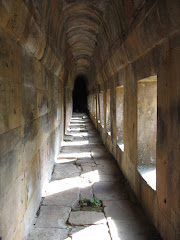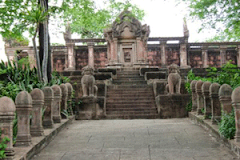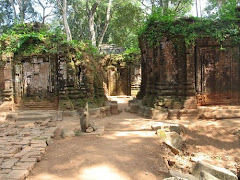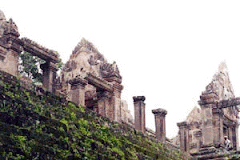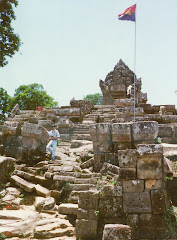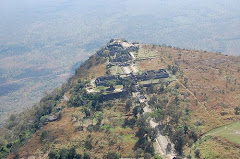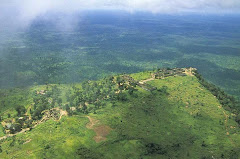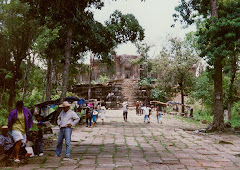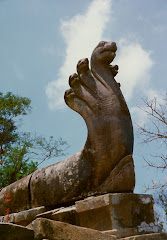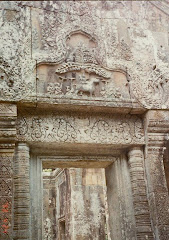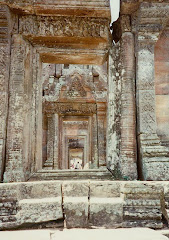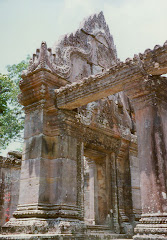Introduction
Kampong Thom is Cambodia's second largest province by area. Its capital is named Kampong Thom, a picturesque town on the banks of the Stung Saen River. The Sambor temple and Prei Kuk temple are the two main temples in Kompong Thom as well as other less significant Angkorian sites. Kompong Thom was a very powerful capital in Southeast Asia during the Funan period. Later on, during the French rule, the province was home to a large group named the Stieng, but they have long been assimilated into Khmer society. ‘Kampong Pos Thom’ was the original name of the present called ‘Kampong Thom’. Because originally long time ago, at the dock of the Sen River next to a big natural lake, there was a big cave with a pair of big snakes inside. The people living around this area usually saw these big snakes every Buddhist Holiday. Time after that, the snakes disappeared, and the people of that area called it Kampong Pos Thom. Then, only short words ‘Kampong Thom’. During the French colony in Cambodia, the French ruled and divided Cambodian territory into provinces, and named them according to the spoken words of the people ‘Kampong Thom Province’.
The provincial capital Kampong Thom is another bustling town on the banks of the Stung Sen River. The town itself is strategically located on the National Highway No 6 between Phnom Penh and Siem Reap. Its more a stopover to have a break from driving long distances or to eat something on the way to Siem Reap or Phnom Penh, than a very touristic place. Despite the town itself people come to explore the pre-Angkorian Chenla capital Sambor Prei Kuk, the remote temples of Preah Khan and Prasat Preah Vihear.
Geography
 Kampong Thom is a province located at the central point of the Kingdom of Cambodia. The province has a total land area of 15,061square kilometers divided into 8 districts, 81 communes and 737 villages. The province borders in the North with Preah Vihear and Siem Reap, to the East with Kratie, to the South with Kampong Cham and to the West with Kampong Chhnang.
Kampong Thom is a province located at the central point of the Kingdom of Cambodia. The province has a total land area of 15,061square kilometers divided into 8 districts, 81 communes and 737 villages. The province borders in the North with Preah Vihear and Siem Reap, to the East with Kratie, to the South with Kampong Cham and to the West with Kampong Chhnang.
The province is divided into two parts:
- Eastern part of National Road 6: Covers 70% surface consisting of forests and plateaus, which are rich in natural resources for a good and profitable agriculture, forestry and animal husbandry.
- Western part of National Road 6: Covers 30% surface consisting of plain area extending to the famous Tonle Sap Lake. This area is one of the best areas in Cambodia for rice cultivation and fishing to support the needs of the province and to additionally export them to other areas or Countries. Two of the three core areas in Tonle Sap Biosphere Reserve are located in Kampong Thom: Boeng Chhmar (14,560 hectares), and Stung Saen (6,355 hectares).
Population
The total population of Kampong Thom is 708,398 person or 4.5% of the total population (14,363,519 person in Cambodia, 2007, provincial government data) with a growth rate of 2.4%, which is consisting of 343,478 person or 48.3% who are male and 364,920 person or 51.7% who are female. The above number also consists of 517,072 person or 85.0% who are farmers, 28,150 person or 4.60% who are fishermen, 91,248 person or 15% who are traders, 5,884 person or 0.97% who are government’s officers.
Climate
 The country has a tropical climate - warm and humid. In the monsoon season, abundant rain allows for the cultivation of a wide variety of crops. This year-round tropical climate makes Cambodia ideal for developing tourism. Travellers need not to fear natural disasters such as erupting volcanoes or earthquakes, and the country is not directly affected by tropical storms. Climate: Cambodia can be visited throughout the year. However, those plans to travel extensively by road should be avoided the last two months of the rainy season when some countryside roads may be impassable. The average temperature is about 27 degrees Celsius; the minimum temperature is about 16 degrees. December and January are the coolest months, whereas the hottest is April.
The country has a tropical climate - warm and humid. In the monsoon season, abundant rain allows for the cultivation of a wide variety of crops. This year-round tropical climate makes Cambodia ideal for developing tourism. Travellers need not to fear natural disasters such as erupting volcanoes or earthquakes, and the country is not directly affected by tropical storms. Climate: Cambodia can be visited throughout the year. However, those plans to travel extensively by road should be avoided the last two months of the rainy season when some countryside roads may be impassable. The average temperature is about 27 degrees Celsius; the minimum temperature is about 16 degrees. December and January are the coolest months, whereas the hottest is April.
General information about the provincial climate:
- Cool season: November- March (20-28c)
- Hot season: March- May (30c -35c)
- Rainy season: May - October (23-30c, with humidity up to 90%.) At this time of year it rarely rains in the morning: most precipitation come in the afternoon, and even then, only sporadically. Rainfall varies considerably from area to area, whereas the seaward slopes of the Southwest highlands (Kompong Som and Kampot provinces) receive more than 5,000 mm of rain per annum, the central lowlands average only about 1,400 mm.
Economy
 Kampong Thom is also a province, rich in tourism potentials to attract national and international tourists such as the exotic lakes, rivers, forests, mountains and more than 200 ancient temples. Much of Kampong Thom is located on the floodplain of Lake Tonle Sap. In 2003-04 it was a significant harvester of wild fish (18,800 tons) and the fourth largest producer of fish through aquaculture in Cambodia (1,800 tons). Most fish-raising is home production, with a growing segment devoted to rice field aquaculture.
Kampong Thom is also a province, rich in tourism potentials to attract national and international tourists such as the exotic lakes, rivers, forests, mountains and more than 200 ancient temples. Much of Kampong Thom is located on the floodplain of Lake Tonle Sap. In 2003-04 it was a significant harvester of wild fish (18,800 tons) and the fourth largest producer of fish through aquaculture in Cambodia (1,800 tons). Most fish-raising is home production, with a growing segment devoted to rice field aquaculture.  Kampong Thom is also one of the largest producers of cashew nuts in Cambodia, with 6,371 hectares under production. The Riel is the local currency. However, the US Dollar is accepted (4,000 Riel to one U.S.D, July 05) and it is best to carry small denominations. Credit cards, Traveler's Cheques and foreign currencies are accepted in major hotels, souvenir shops and banks. Newly installed Credit Card Teller distribution machines are now available in Siem Reap and Phnom Penh.
Kampong Thom is also one of the largest producers of cashew nuts in Cambodia, with 6,371 hectares under production. The Riel is the local currency. However, the US Dollar is accepted (4,000 Riel to one U.S.D, July 05) and it is best to carry small denominations. Credit cards, Traveler's Cheques and foreign currencies are accepted in major hotels, souvenir shops and banks. Newly installed Credit Card Teller distribution machines are now available in Siem Reap and Phnom Penh.
How to get there
Bus: The province has a very basic road network, which links Phnom Penh (165km) and Siem Reap (150km) with the National Highway No 6, and the separate National Road 64 to Preah Vihear province with a distance of 126 km. After a rebuild of the former dust road that was long overdue, this is now one of the best roads in the Country. There is lots of bus companies going from Phnom Penh to Siem Reap or back, so while they pass Kampong Thom its easy to drop off there. The companies such as Sorya (near Central Marlket), G.S.T. or Capitol (Str. 182) go usually 7am, 8am, 9am and again midday 12am, 1pm, 2pm to Siem Reap. Prices to Kampong Thom are between US$1.5-2.5.
Share Taxi: If you want to shorten the time spend on the trip to Kampong Thom you may take on of the share taxis, mostly leaving near the central market. As they aren’t really the comfortable version of travelling you’ll even have to pay more as with the bus (approx. US$3-6). Phnom Penh to Kampong Thom 12,000riel(Same in reverse) Kampong Thom to Siem Reap 15,000riel(5-6 hours) Kampong Thom to T’beng Meanchey (4-6 hours) 26,000riel.
Motorcycle Touring Info: Phnom Penh to Kampong ThomSecurity in all directions is no longer a problem. As mentioned earlier, the road from Phnom Penh is in good shape. Starting at the Japanese Bridge in Phnom Penh, head out National Highway No 6 to Skon, where you go left at the traffic circle (it has a statue of kids holding a bird). This takes you the rest the way. Kampong Thom to Siem ReapIt’s a 145 km ride, with the road in nice shape for a while after you leave Kampong Thom town, then it gets a little rougher, but much re-grading work has been done. It’s not like it used to be; bomb crater holes used to be so deep that during the rainy season one could have a family picnic at a crater’s shoreline. The Kampong Thom-T’beng Meanchey (See warning below) To take the 137 km journey, you follow Highway 6 toward Siem Reap for 5 km to the fork in the road. A sign in English will point to the right side of the fork for TM Chey (T’beng Meanchey town, Preah Vihear Province) down on Highway No 12. The road here is much improved, as there has been a lot of resurfacing done to accommodate the droves of logging trucks heading to and from Preah Vihear province. The downside of the easier road is the dust that the trucks whip up as they chug along the road. It can be a real hazard as the thick dust clouds practically blind you from seeing possible oncoming traffic when you want to pass these slow moving vehicles. The final 37 km stretch through the mountains and into T’beng Meanchey is still tough going. This is how the entire road used to be - bomb craters, erosion galleys, and rocks are all here for your motorcycle fun. It can actually be enjoyable stretch, because the scenery is brilliant. This stretch can also be done during the rainy season, though the road may be slippery and dotted with small mud ponds after heavy rains. Enjoy it.
Where to eat
Aruneas Guesthouse & Restaurant: This is probably the most popular spot to eat in town, located beneath Arunras Guesthouse. They serve good Western, Chinese and Khmer food at cheap prices, which of course is why they are popular. An English menu and staff that can speak the language are other nice features.
Neak Meas Hotel & Restaurant: This restaurant serve good Chinese and Khmer food in the morning and throughout the day until the nightclub kicks in around 8:30pm.
Monorom Restaurant: This restaurant, crowded by lots of locals is situated next to the Mittapheap Hotel. Its quite popular on the National Highway No 6 to the North and especially for its breakfast.
9 Makara Restaurant: Just north of the river bridge on the east side of Highway No 6 is a row of three restaurants, with the middle one being 9 Makara Restaurant and Nightclub. The restaurants are enclosed and serve Khmer and Chinese fare, with beer girls there to greet you in the evening.
“Restaurant Row” of Kampong Thom: About a kilometer toward Phnom Penh on Highway No 6 is Kampong Thom’s version of “Restaurant Row” outside of Phnom Penh. There are a number of Khmer and Chinese food restaurants on both side of the highway that get rolling in the evening and have the Cambodian requirement of beer girls on hand.
Reaksmay Restaurant: One of the first restaurants you come across at “Restaurant Row” is this new and upscale place. It’s fairly fancy for Kampong Thom. They serve up a bit of Western food to go along with the Khmer and Chinese fare and it’s the home of the fancy-pants beer girl of Kampong Thom. Super Soup Restaurant at the Stung Sen Royal Hotel. The Super Soup restaurant (try saying that quickly ten times) is everything that it’s billed to be a soup restaurant. Cheap Food Stands. There are simple rice and noodle dish stands in front of the market at the east side.
Where to stay
Arunras Guesthouse: A clean, well-run and friendly place it has and attached Asian bath and is good value at US$3. The mototaxi drivers who can take you to Sambor Prei Kok hang out in front and the restaurant here is a popular place to eat. This guesthouse is suposingly the most popular place for budget travellers in town. The rooms include TV and a Western bath (US$3) and an additional air-con if required (US$8).
Arunras Hotel: This place was formerly called Neak Meas Hotel. The roof of this five-story building represents the highest point in Kampong Thom and affords some nice views of the town the countryside and Santuk Mountain. There are also nice wrap-around terraces on each floor, and the rooms on the third floor south side have a good view, making it a decent spot to chill out with a cool drink. Clean rooms with a/c, TV, and double bed are US$10. For a room on the first floor with hot water add US$5. The nightclub downstairs closes at 11 pm so it’s not much of a problem. If you like to turn in early get a room at the back on the third floor. There is also a restaurant in the hotel. Its probably the best deal in town.
Stung Sen Royal Garden Hotel: It’s named after the river that is next too. This is another top spot in town. The rooms come fully furnished and the gargantuan suites are a good investment for an extra 5 bucks. All rooms have a/c, TV, fridge, Western bath and hot water shower. Depending on the room size, they go for US$20-25.
Sambor Prey Kuk Hotel: It is definitely not one of the best hotels, but still a good fortune for budget travellers, who like it a bit older for less money. The rooms are well equipped with Western bath and fan or air-con. Some rooms have TV. The prices range from US$4-8 (without air-con) and from US$6-10 (including air-con).
Vimeansuor Guesthouse: Business must be good, as they have been putting up an addition. It’s a very clean place with nice rooms, attached Western bath and ceiling fan for US$6.
Mohalleap Guesthouse: It’s another clean place with an Asian bath and fan room going for US$3.
Mohalleap Guesthouse: It’s another clean place with an Asian bath and fan room going for US$3.
Visalsok, Soksan and Penh Chet Guesthouses: These three are all similar with small rooms and share bath going from between US$1 to about 10.000 riel. The cleaning leaves a lot to be desired.
Shopping
Stone Handicraft: Located at Ka Kos Village, Ka Kos Commune, Santhuk District in 16-km distance from Provincial Town of Kampong Thom on National Highway No 6. The craftsmen take the rocks from the food of Santhuk Mountain to make statues and various figures for house decoration. This stone handicraft is served for domestically and internationally target markets. Beside stone handicraft, Kampong Thom has other handicrafts like Krama, Silk shirts, traditional Khmer clothing and handbags. There is also the common markets with all you may need (food, garments, etc.).
Attractions Site in Kampong Thom Province :
Sambor Prei Kuk
 The ancient city where monuments of Sambo Prei Kuk are found today was identified as ISANAPURA, the capital of Chenla in 7th century. Chenla was a former vassal of the Funan kingdom that was one of the first state in Southeast Asia, but it gradually gained its power and eventually King Citrasena Mahendravarman of Funan in the early 7th century. Main archaeological features in these groups of monuments are said to have been founded by king ISANAVARMAN I, the son of king Citrasena.
The ancient city where monuments of Sambo Prei Kuk are found today was identified as ISANAPURA, the capital of Chenla in 7th century. Chenla was a former vassal of the Funan kingdom that was one of the first state in Southeast Asia, but it gradually gained its power and eventually King Citrasena Mahendravarman of Funan in the early 7th century. Main archaeological features in these groups of monuments are said to have been founded by king ISANAVARMAN I, the son of king Citrasena.  Many decorative details in Khmer architecture and sculpture are classified as Sambor style: the name was derived from these monuments dated in the first half of the 7th century. Henceforth this kingdom was the leading state and comprised the whole of Cambodia proper. Furthermore, several successions of kings’ reign might have maintained these monuments as their capital city. The century following the death of JAYAVARMAN I who is the last known king of this kingdom in the second half of the 7th century is a dark period in the history of Chenla. According to a Chinese accounts, in the 8th century, the country of Chenla was divided into land and water Chenlas. The obscurity prevails and this monument might be neglected thereafter. The history. However, is traced again with the accession of JAYAVARMAN II, who founded a new polity that is now referred as Angkor in the beginning of 9th century. Decorative details of Prasat Tao (Central Group) are similar to the style of the remains belong to the period of the king JAYAVARMAN II, Particularly, characteristic lion statues resembles the statues found in Phnom Penh. From these reasons this architectural complex is said to be constructed in this period. Furthermore some inscriptions in Prasat Sambor (Northern Group) are dated in the 10th century under the reign of the king RAJENDRA VARMANII. And Robang Romeas group that is located about 2km northward from main temple area, contains other inscriptions of the king SURYAVARMAN I period. Some other decorative details and statues belong to the late Angkor period styles were confirmed from these temples.
Many decorative details in Khmer architecture and sculpture are classified as Sambor style: the name was derived from these monuments dated in the first half of the 7th century. Henceforth this kingdom was the leading state and comprised the whole of Cambodia proper. Furthermore, several successions of kings’ reign might have maintained these monuments as their capital city. The century following the death of JAYAVARMAN I who is the last known king of this kingdom in the second half of the 7th century is a dark period in the history of Chenla. According to a Chinese accounts, in the 8th century, the country of Chenla was divided into land and water Chenlas. The obscurity prevails and this monument might be neglected thereafter. The history. However, is traced again with the accession of JAYAVARMAN II, who founded a new polity that is now referred as Angkor in the beginning of 9th century. Decorative details of Prasat Tao (Central Group) are similar to the style of the remains belong to the period of the king JAYAVARMAN II, Particularly, characteristic lion statues resembles the statues found in Phnom Penh. From these reasons this architectural complex is said to be constructed in this period. Furthermore some inscriptions in Prasat Sambor (Northern Group) are dated in the 10th century under the reign of the king RAJENDRA VARMANII. And Robang Romeas group that is located about 2km northward from main temple area, contains other inscriptions of the king SURYAVARMAN I period. Some other decorative details and statues belong to the late Angkor period styles were confirmed from these temples.  These historical evidences suggest that these monuments must have belonged to the important provincial principle city after Pre Angkor period. From above historical perspective, this group of monuments is extremely significant not only for Cambodia but also for the entire area of Southeast Asia, for they are the only remaining sound architectural constructions that exemplify the architecture and sculpture of the early period in sizable quantity.
These historical evidences suggest that these monuments must have belonged to the important provincial principle city after Pre Angkor period. From above historical perspective, this group of monuments is extremely significant not only for Cambodia but also for the entire area of Southeast Asia, for they are the only remaining sound architectural constructions that exemplify the architecture and sculpture of the early period in sizable quantity.
Lion Temple Group

Lion temple group comprise 18 temples with two ramparts closed to the pond. The reasons why the people called Lion Temple because on the tops of all stairs from the four directions, there were sitting lions with forelegs standing up, hind-legs humbling down, its head rose up and its mouse opened to the sanctuary. The rampart outside made of laterite, had 328-meter length, 310-meter width and 101,650-square-meter surface. This rampart had Gopura in two-direction (East and West) entrances that are connected by the other laterite ramparts. In between rampart 2 and 1, at the Northeastern side near the rampart 1, there was a rectangular pond (42.10m x 34.20m). The bottom of the pond spread by laterite and surrounded by the stepped stairs. The small stairs of the Southern side are made of sandstone. Now the pond is empty during the dry season. When we enter from the Eastern Gopura on either side of the road, we see two sanctuary hills were built on high terrace with the tracks of the round column made of laterite lining up in 0.40m height.
Prasat Kok Rokar (Preah Theat)
Prasat Kok Rokar is located in Rokar Phum, Srayov Commune, Stung Sen District, Kampong Thom province in a 14-km distance from Provincial Town of Kampong Thom. The temple was built of sandstone and laterite in Khleng style at the end of 11th century during the reign of king Suryavarman I to dedicate to Siva. This isolated sanctuary (dimension: 6m x 5m; 8m height) was built on the hill and faced to the east. The body of the central temple has conical form with porches opening to the east, and a door reached from the eastern entrance (three other doors were the false doors). The diamond column has octagonal forms, and the three lintels have various forms. Based on the study to the site, the sanctuary was formed in rectangular shape. The outside rampart has 25m x 25m size and Gopura from the four directions which jointed to the surrounding laterite rampart. Outside the rampart, there were likely moats surrounded as we saw some marks remain until now. In observation to the temple’s court, there were lintels and inscriptions available at the surrounding. The lintels has various style some in Sambor Prei Kuk, some in Prei Khmeng and some in Kulen style etc. This didn’t mean that the artists built the mixed styles. According to the elderly resident there said that during the French colony in Cambodia, these ancient objects were brought from other temples to gather here in preparing to break into small parts that would then be used to pave the roads, but they didn’t construct the roads yet due to the war happened in the Country that why these ancient objects remained there. On the hill 1km from the temple, where they held midnight ceremony every full moon day with making virgin girls dancing around the fired place to pray for the rain. This ceremony could be participated by virgin girls only.
Prasat Yeai Poeun

Prasat Yeai Poeun Group comprised a total of 22 sanctuaries (5 have octagonal shapes) with two wall rampart, and was built of brick, masonry, laterite and sandstone in rectangular from in 7th century (600-635) during the reign of Isanavarman I to dedicated to Shiva. They were built on a hill with Gopura from the eastern and western entrances joining to an outside laterite rampart. The inner rampart reached by gateways from the four directions and joined to the brick rampart carved in various clustering figures. Along the sanctuary contained the eastern and western Gopura joined to the laterite rampart (304m x 274m or 83,296 square-meter surface). Gopura contained framed door with diamond columns and a lintel built of sandstone. Eastern Gopura contained a buried large inscription (size: 2.41m x 0,9m x 0,15) inscribed with 17 lines of script. This inscription was brought to be kept in Kampong Thom Museum.
Kroul Romeas Group
Behind Kroul Romeas Group, there were four more sanctuaries made of brick and built during the reign King Suryavarman 1(end of 11th century). These sanctuaries were built on a rectangular hill, and faced to the East. One of sanctuaries was not completely built yet, it was likely built in later period. The lintel was carved in the form of bow without the modal. At the southeastern side, there were two temples recognized as the original ancient khmer styles.
Prasat Kuh Nokor
Prasat Kuh Nokor is located in Trodoc Poung Village, Pong Ror Commune, Baray District, Kampong Thom Province and is in the complex of Wat Kuh Nokor (Buddhist Pagoda). To reach there, passenger can take all kinds of vehicle on National Road 6, then turn west through the gate of Kuh Nokor pagoda in a distance of 2km. It is 79km from Provincial Town of Kampong Thom. These sanctuaries were built on the flat ground, on a square terrace made of laterite and sandstone facing to the East with the rampart surrounding. This rampart has a 35m-length (East to West) and a 25m-width (North to South). There is surrounding rampart of one meter height and 0.8 meter thick with two gateways: Eastern gateway is 9m height divided into 3 rooms, and western gateway is small and has square shape. The structures of the buildings are mixed, made of laterite and the decoration of sandstone. East of the temple, there are 2 ponds-the small one has about one-meter depth,45-meter length and 20-meter width, and the big one has 160-meter length, 88-meter width and more than one-meter depth. Prasat Kuh Nokor comprises:
- The throne is square shape, made of sandstone and decorated by lotus flowers and pointed-diamond style, and has square hole at the middle.
- A male standing statue remains from thigh to shoulder.
- A male standing statue remains from thigh to the navel.
- A male coiling statue is difficult to be identified as the statue broke the end of the arm and the sole of the foot (local people called the statue ‘Neak Ta Bark Kor’. Prasat Kuh Nokor was built in 10th -11th century by the king Suryavarman I (1002-1050). But in the same year (1002), another document said there was a king named Preah Bat Jayviravarman who who was also on throne (1002-1010). The two kings claimed that they were on throne at the same year, this leading to war between king and king until 1006. Then the king Suryavarman I conquered Yasodharpura city, however the war still lasted for 04 years to end. In 1010, the king Suryavarman I gained success over the entire territory and had full power in the country.
Phnom Santuk (Santuk Mountain)

Since the ancient time to the present, Phnom Santuk Mountain has been called in many names as below:
- Phnom Thom (in history)
- Phnom Arth Santuk (In history)
- Phnom Chorm Chong Kiri - Phnom Krop Tuk
- Phnom Preah Bat Chann Tuk The ancient heritages on the top of the mountain:
- Many Buddha statues were carved from great mountain rock including three big Buddha statues reaching Nirvana, each has more than 10-meter length.
- Prasat Touch of pyramid shape, made of sandstone, has three stories and three-meter height, and is located next to the ancient wooden temple (presently, it is made of cement) with a rectangular pond (10m x 4m).
- Preah Bat Chann Tuk statue was carved on the stone shaped as food of a sacred human, and there are many other small sculptures. By the stories, the construction and the statues were erected during the reign of Preah Ponhea Dharma Reacha (1474-1494) and have been maintained until now.
 Phnom Santuk has changed names to Chorn Chong Kiri and Phnom Krop Tuk. Chan Dare or Chan Chare are called two pieces of stone by local people that join all together in marked symbol and made in small hole, the passenger arrived there, they always dropped cash coins (ancient coins) into this small hole. When cash coins was dropped in, it make soft weak voice like a voice of the birds sing or music with happiness. So they did that since ancient period.
Phnom Santuk has changed names to Chorn Chong Kiri and Phnom Krop Tuk. Chan Dare or Chan Chare are called two pieces of stone by local people that join all together in marked symbol and made in small hole, the passenger arrived there, they always dropped cash coins (ancient coins) into this small hole. When cash coins was dropped in, it make soft weak voice like a voice of the birds sing or music with happiness. So they did that since ancient period.
Preah Bat Chan Tuk or Buddha statue
- Was built by King Ang Chan I (16th century).
- King Baksei Chamkrong built a wooden temple on Phnom San Tuk at the same year.
- Sculptures carved on large ancient stone with many scenes of story.
- Buddha statue reaching Nirvanawas carved on larges-stone since 16th century.
Prey Pros
Prey Pros is a natural and cultural site located at Prey Pros Village, Prey Preal Commune, Kampong Svay District in approximate 16-km distance northwest of Provincial Town of Kampong. The site cover an area of 2 million square meters and includes a river (4,000-meter length and 30-meter width) which is rich in Domrei fish. The site is a venue for foot races, bicycle races, and other games during national festivals. In addition, the provincial tourists’ office has organized other recreational activities such as boating, fishing and swimming, and has built resting cottage where food and drinks are sold. The view from Prey Pros is beautiful and enchanting, while the wind which blows across the river will cool and refresh the hot and tired tourists.
Prasat Phum Prasat
Located in Prasat Village, Prasat Commune, Snatuk District, Kampong Thom Province. This temple located in a 27-km district from Provincial Town of Kampong Thom, and there is road from the southern direction of 500-meter length. This temple was built of brick, masonry and sandstone in 8th century (706) with Kampong Preah style to dedicate to Siva. It was a sanctuary built temple on the flat terrace without the false door and faced to the east. In the ancient period, the door were made by two wooden boards-one carved with sculptures of male divinities at another one carved with female divinities. The southern framed door was inscribed with five lines of inscription, and its back was mostly erode. The lintel was ornamented by the garlands; the diamond column we carved with carousing motifs; and the upper corner of the temple contained the segments of Linga and Yoni. Southeast of the temple, there were other two more temples (at present, they became the small hills). South of the large temple, were was a hill called Toul Samrong or Toul Nak Ta Samrong; and east of this hill, there was a Pou tree in which the local people call Toul Nak Ta Deum Pou (the hill of the body tree spirit). In ancient time, this place was the former royal palace where the royal valuable were kept. Then it was excavated and the valuables were taken away during the French colony. This sanctuary was in seriously ruined condition, in 1996 the brick of the southern and western towers dropped down due to the trees growing and the strong wind blowing on them. Besides, there was lack of conservation and protection leading to the serious damages caused by nature and aged existence at the sanctuary especially by the ignorant people. Closed against the sanctuary, where the Buddhism monks constructed the new temple. This could caused the damages to the ancient sanctuary. Beside the Prasat Phum Prasat, there was an inscription buried into the ground which its upper part was inscribed with six lines of Sanskrit scripts. This inscription was found at six kilometers near the Police Post on National Road 6.
Prasat Andet Temple
Prasat Andet is located northwest of Provincial Town of Kampong Thom, in Prasat Village, Sankor Commune, Kampong Svay District, Kampong Thom Province. The temple was built in second half of 7th century (627-707) during the reign of king Jayavarman I to dedicate to God Hirihara, in Kampong Preah style and made of brick with masonry, laterite and sandstone. Prasat Andet had isolated plan, built on a 5.30-meter height artificial hill, and was form in rectangular shape with 7.50-meter length, 5.50-meter width and 1-meter thick (interior to exterior). It was facing to the East. The lintel of Prasat Andet was carved in the garlands and carefully done in the traditional khmer style. The coronet (2.22 lengths) was ornamented around by the rings decorated, and at between of the rings we decorated with garland and bulb flowers surrounded, which are joining each other by the end of the decorations. In original former time, this temple contained Harihara Statue standing on a decorative royal throne, and the statue was brought to be kept at Phnom Penh National Museum. The Harihara statue is a body side’s Siva and another body side’s Vinu. The framed door had 1 m width, 2m height and 0.20m thick. On the northern framed door, we saw the marks of a cloven hoof of tiger cat that used to go to the upper box of the door, which remained the marks until now. Bird Sanctuary of Boeng Tonle Chmar: Boeng Chmar contains fishing lot 5 and lot 6, and is 30km far from Stoung District town of Kampong Thom Province, there were villages of Nesat, Kamong Kdei, Svay Kor, Mo Doung, Kampong Bradom and Msa Trang Tboung in Peam Bang Commune. The people living in this area with floating houses that are moving up and down according to the water levels in the jungle and flooded forest. The bird sanctuary of Boeng Chmar covers a land area of 400 hectares having an interconnecting network of water channels along the bank of Boeng Kla Lake, rich in flooded forests. This area is connected by two big river tributaries (Stoung and Stung Chik Kreng) flowing down to Boeng Chmar. Beong Chmar is the sanctuary for many kinds of birds.
Wat Kompong Thom
Wat Kampong Thom, also known as Wat Indrisamavora, is located in Kdei village, Preykahu commune, Stung Sen district, about 1 kilometer from the provincial town. This old temple is a holy place that covers 2,053 square meter. Statues related to the Buddha story can be found in the pagoda. The pagoda fences are painted in many different colors and styles. The pagoda offers a cool place for visitors to relax, especially during festivals.
Wat Kdei Deum
Wat Kdei Deum is located in Kampong Chen village, Kampong Chen Tbong commune, Storng district about 52 kilometers northwest of the provincial town. A holy place, the site features two ponds and includes an old temple similar in style to Banteay Srei temple in Siem Reap.
Khmer Angkor Empire Part 1

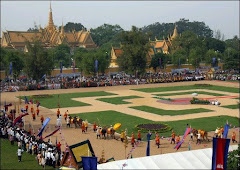

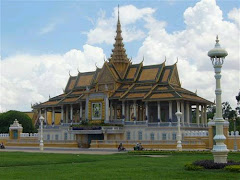

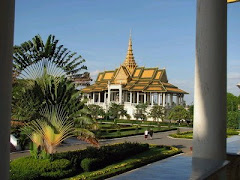
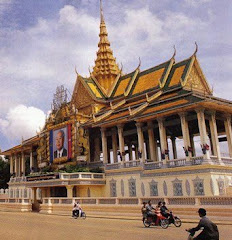
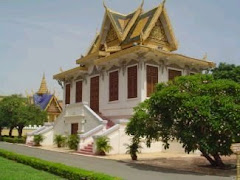
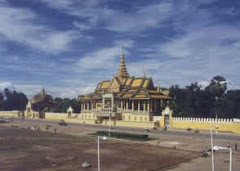
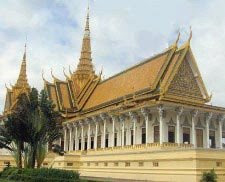

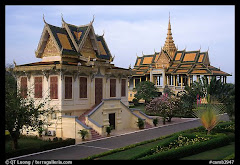






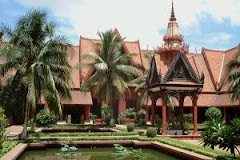




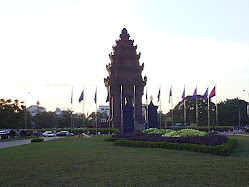





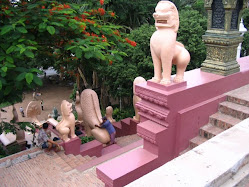
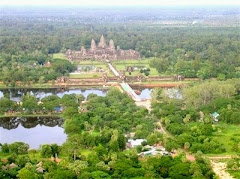
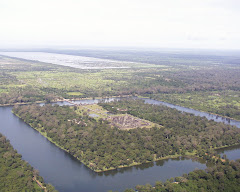

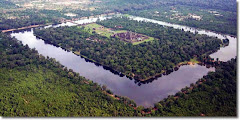
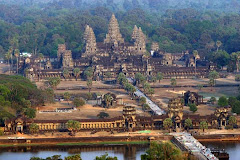

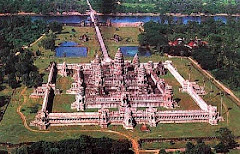
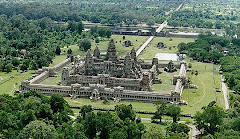
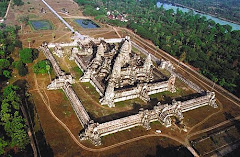




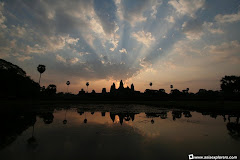

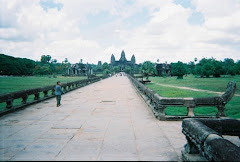

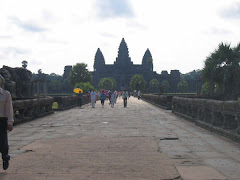
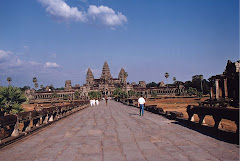
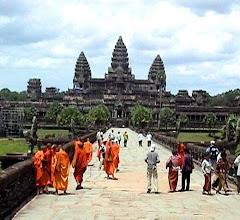
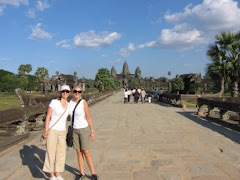
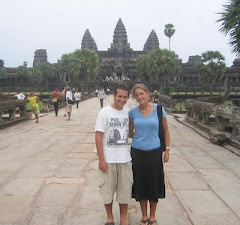

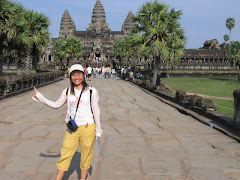
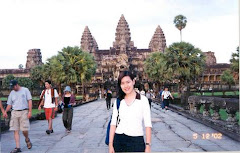

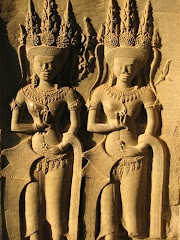





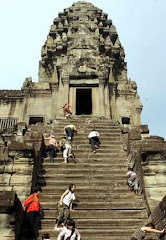

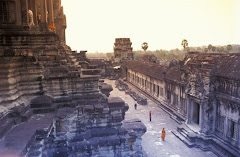
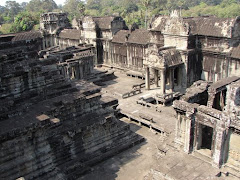
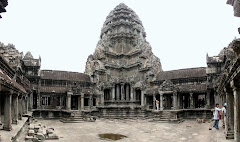
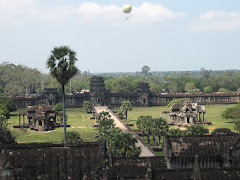


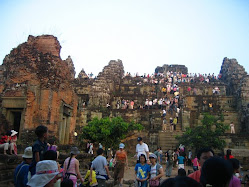

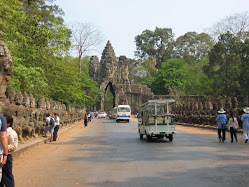

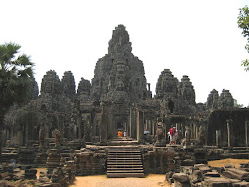
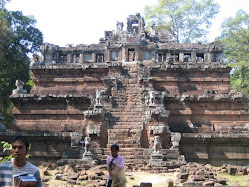.jpg)

